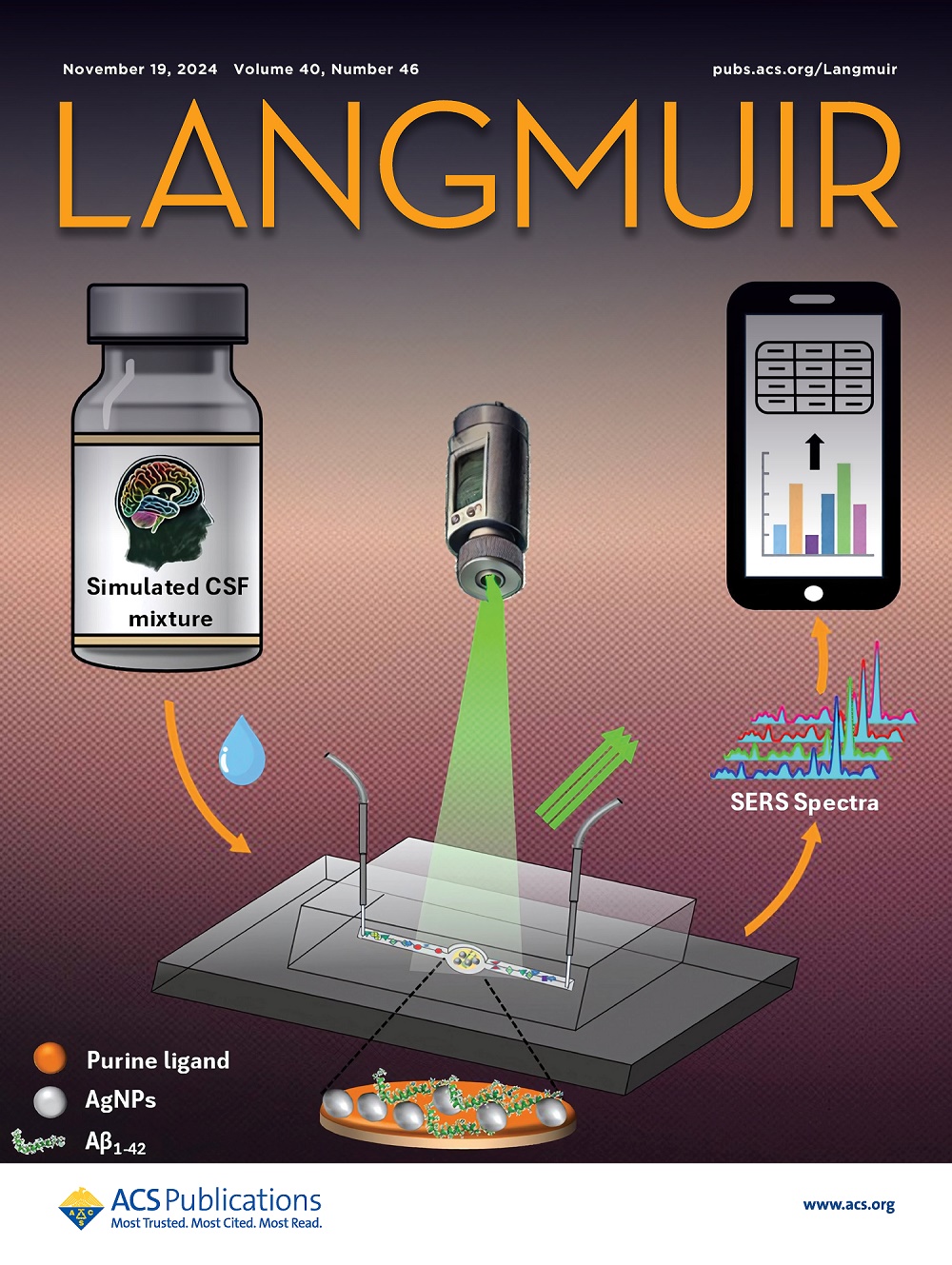Double-Hemin G-Quadruplex Highly Sensitive Detection of Mercury Ions in Human Serum.
IF 3.7
2区 化学
Q2 CHEMISTRY, MULTIDISCIPLINARY
引用次数: 0
Abstract
The traditional G-quadruplex/hemin horseradish peroxidase has poor stability and a strong background signal and is not suitable for the detection of heavy metals such as mercury ions. In this work, we used the previous DNA strand for mercury ion detection and optimized it. Hemin is covalently bound to the 5' and 3' ends of the DNA strand. In the covalent binding state of double Hemin, the G-quadruplex has a strong catalytic activity and can catalyze the oxidation of hydrogen peroxide by ABTS. The formation of double chains with the addition of the S2 chain provides a rigid structure for detecting mercury ions. At the same time, after the addition of mercury ions, the formation of T-Hg2+-T structure further hinders the formation of G-quadruplex and reduces the absorbance value. The detection range in ultrapure water was 0-1000 nM, and the limit of detection concentration was 0.61 pM. In the human serum, the detection range is 0-300 nM and the LOD is 0.1 nM. In addition, the biosensor has excellent selective specificity and is expected to be used to detect mercury ions in organic biological environments and industrial environments contaminated by heavy metals.人血清中汞离子的双血红蛋白g -四重体高灵敏度检测。
传统的g -四联体/血红素辣根过氧化物酶稳定性差,背景信号强,不适合检测汞离子等重金属。在这项工作中,我们使用先前的DNA链进行汞离子检测并对其进行了优化。血红蛋白与DNA链的5‘和3’端共价结合。在双Hemin共价结合状态下,g -四联体具有较强的催化活性,可以催化ABTS氧化过氧化氢。随着S2链的加入而形成的双链为检测汞离子提供了刚性结构。同时,汞离子加入后,T-Hg2+-T结构的形成进一步阻碍了g -四联体的形成,降低了吸光度值。在超纯水中的检测范围为0 ~ 1000 nM,检测限浓度为0.61 pM。在人血清中,检测范围为0 ~ 300 nM, LOD为0.1 nM。此外,该生物传感器具有优异的选择性特异性,有望用于重金属污染的有机生物环境和工业环境中汞离子的检测。
本文章由计算机程序翻译,如有差异,请以英文原文为准。
求助全文
约1分钟内获得全文
求助全文
来源期刊

Langmuir
化学-材料科学:综合
CiteScore
6.50
自引率
10.30%
发文量
1464
审稿时长
2.1 months
期刊介绍:
Langmuir is an interdisciplinary journal publishing articles in the following subject categories:
Colloids: surfactants and self-assembly, dispersions, emulsions, foams
Interfaces: adsorption, reactions, films, forces
Biological Interfaces: biocolloids, biomolecular and biomimetic materials
Materials: nano- and mesostructured materials, polymers, gels, liquid crystals
Electrochemistry: interfacial charge transfer, charge transport, electrocatalysis, electrokinetic phenomena, bioelectrochemistry
Devices and Applications: sensors, fluidics, patterning, catalysis, photonic crystals
However, when high-impact, original work is submitted that does not fit within the above categories, decisions to accept or decline such papers will be based on one criteria: What Would Irving Do?
Langmuir ranks #2 in citations out of 136 journals in the category of Physical Chemistry with 113,157 total citations. The journal received an Impact Factor of 4.384*.
This journal is also indexed in the categories of Materials Science (ranked #1) and Multidisciplinary Chemistry (ranked #5).
 求助内容:
求助内容: 应助结果提醒方式:
应助结果提醒方式:


